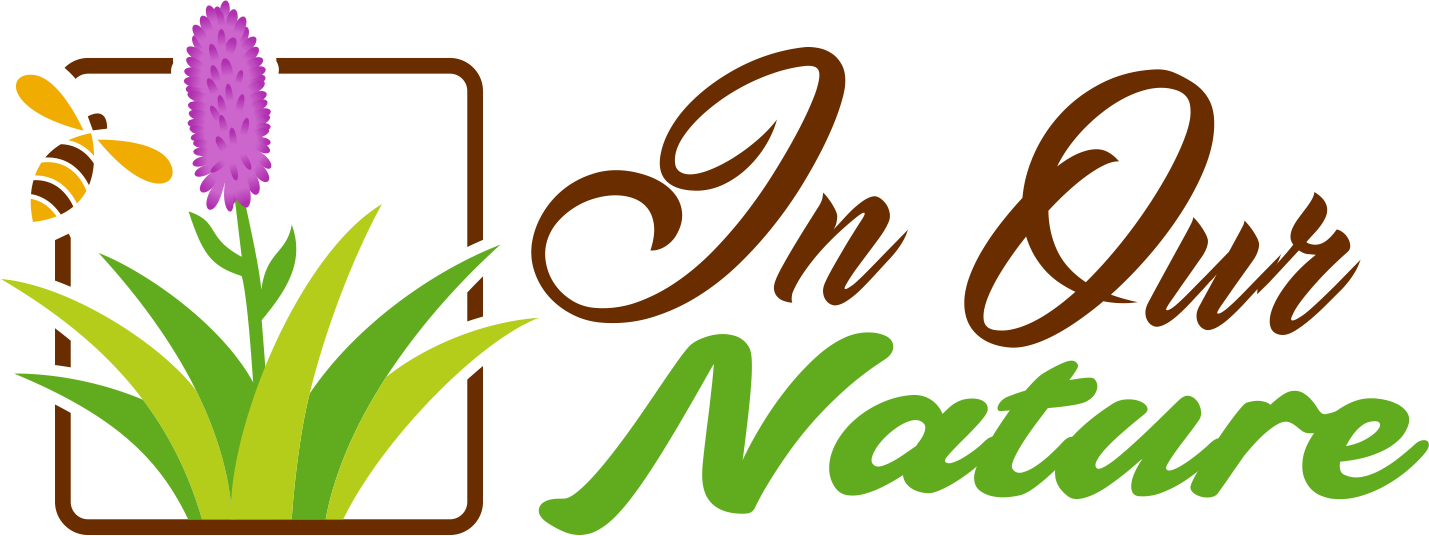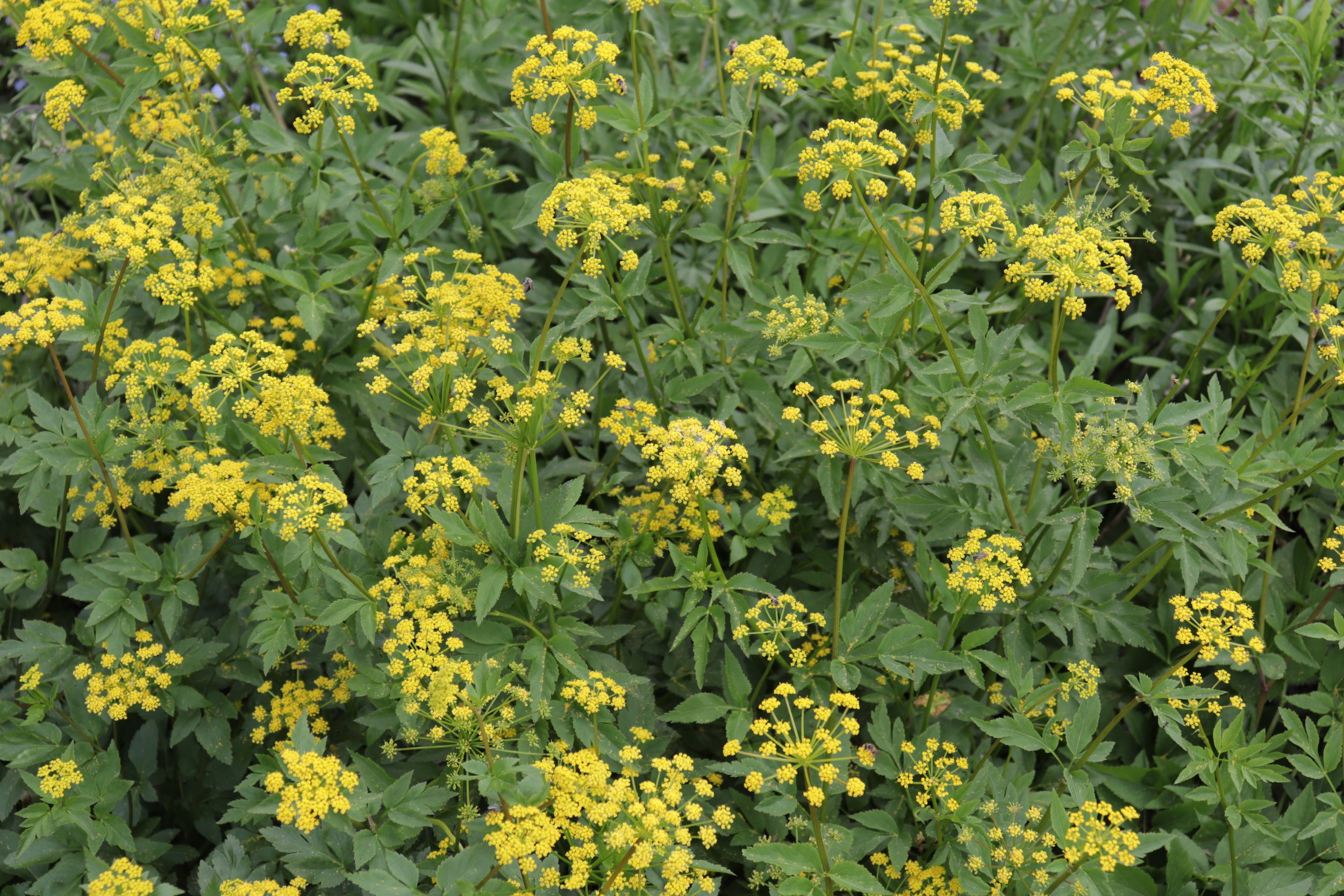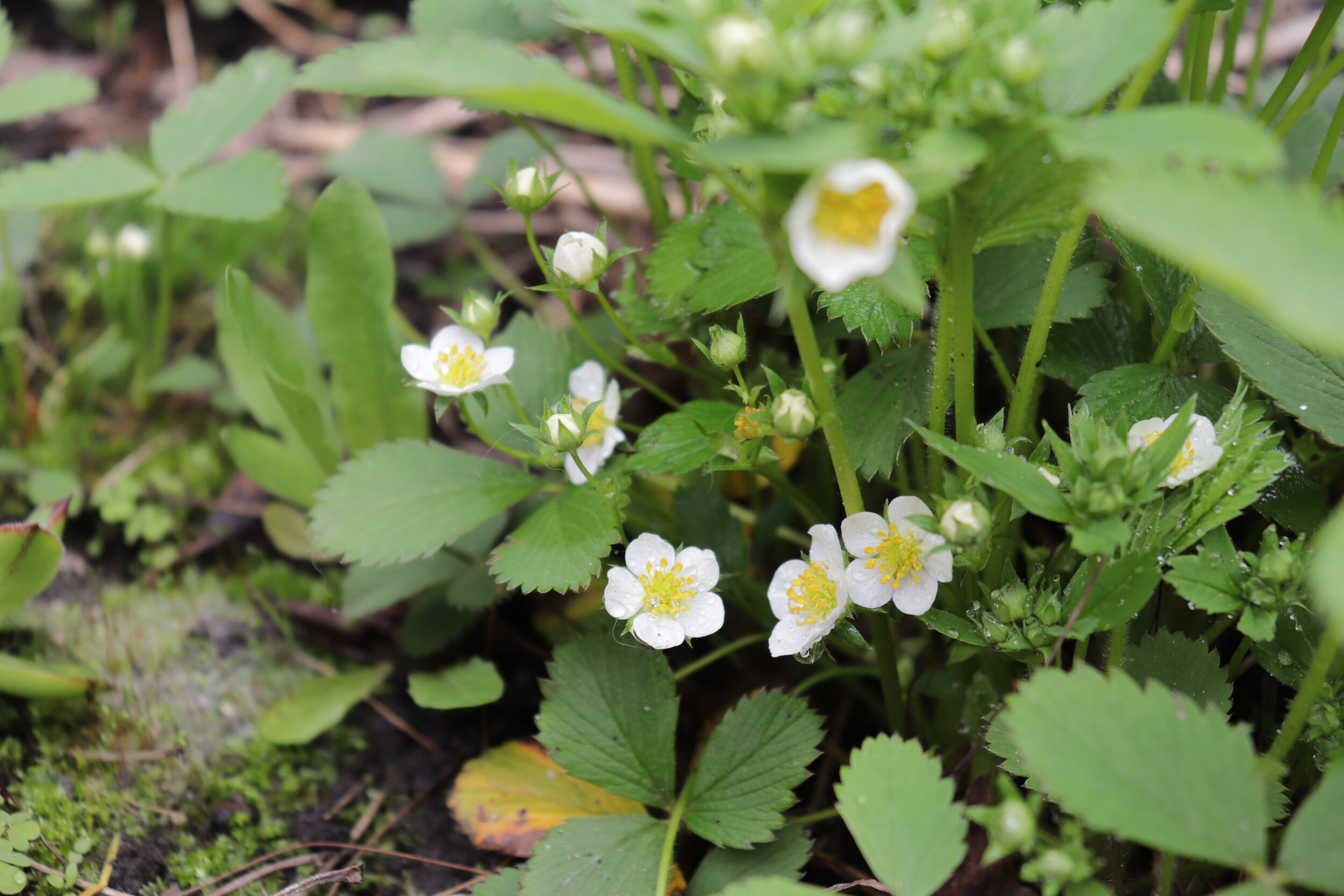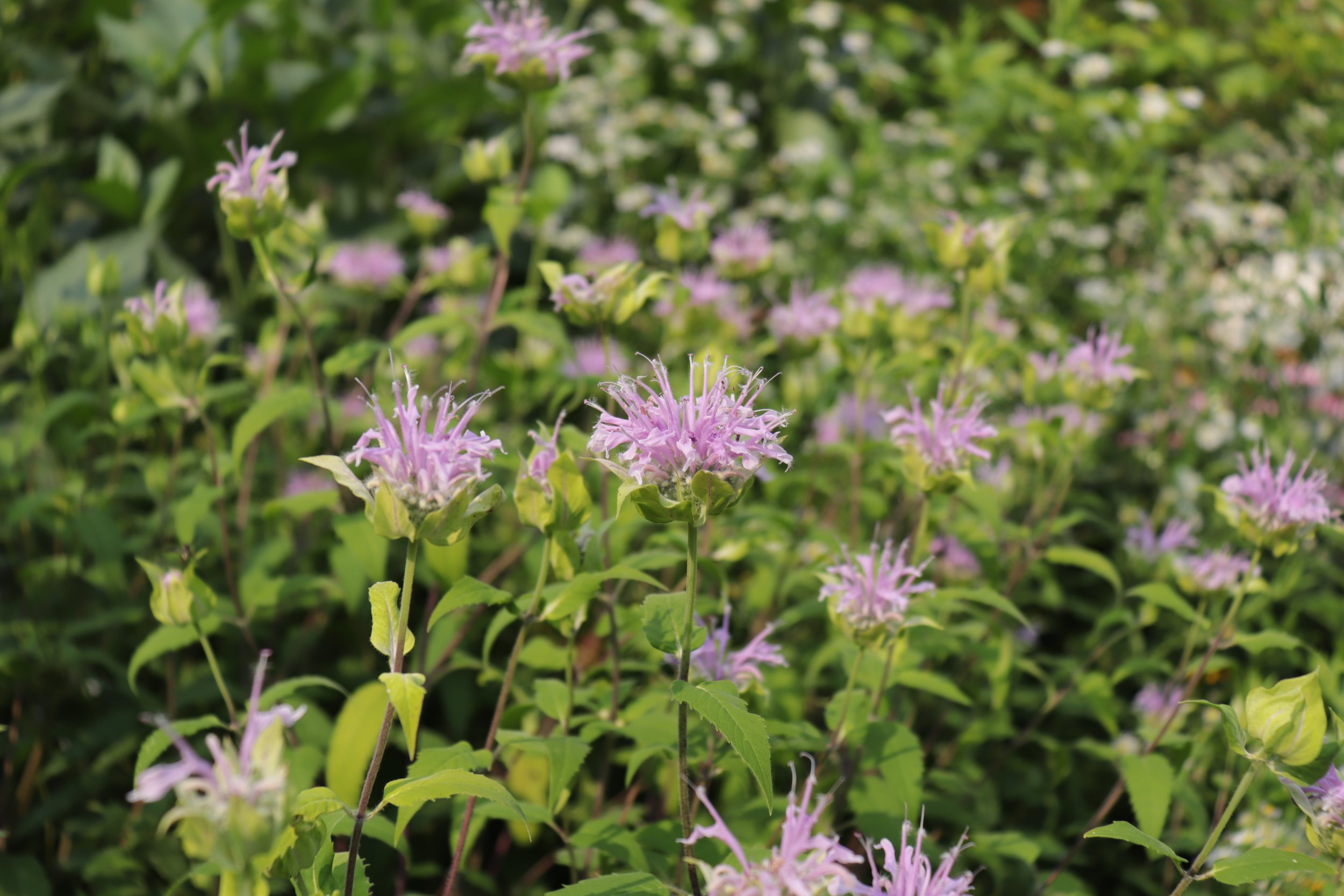Native Plants for Boulevard Gardens
What is a Boulevard Garden?
A boulevard garden is a native plant garden planted in the narrow strip of land between the sidewalk and the street — often called a “hellstrip.” These areas are typically overlooked and filled with turfgrass, but they hold immense potential for biodiversity and community beautification. By replacing traditional lawns with native plants, you can transform these underutilized spaces into vibrant, low-maintenance gardens that offer year-round beauty and ecological benefits.
Benefits of boulevard gardens:
One of our past boulevard garden projects. Photo taken by Susan C.
Year-long natural beauty
Let’s face it - Lawn is boring. Native plants can produce a stunning display of colour and interest in your boulevard all year round.
Reduced maintenance
Once a native boulevard garden is established, it will require far less maintenance than the lawn that was there initially (plus, it won’t go an ugly brown colour during droughts). Unlike lawn, properly chosen plants won’t require supplemental watering or fertilizer to look nice. Plus, you get out of having to mow the grass!
Pollinator habitat
Lawn does very little to support beneficial wildlife such as pollinators. By trading your boulevard grass for native plants, you can help restore lost and degraded habitat for pollinators. Even the smallest garden can help!
Environmental education
In urban areas, lawn seems to be a default landscaping option. By planting a native garden in your boulevard, you can show your neighbours that they too can choose a more eco-friendly option than lawn. You can help educate the further by including habitat signs.
How to Design a Boulevard Garden
Check your local bylaws! Every city/town has different rules so you need to check with yours to make sure you are allowed to plant a garden in the boulevard. Some cities require permits and have height restrictions.
Before you dig, ensure there are no buried utilities.
Keep it short. Tall, floppy plants not only look messy in such a small, narrow garden but, more importantly, can cause safety hazards if they are blocking sight-lines. Aim for plants under 1m in height.
In addition, it may be a good idea to leave a 1 foot wide section of grass or mulch in-between the garden and sidewalk to keep pedestrians from tripping, or stepping, on your plants.
Avoid woody plants - Snow will need to be piled up on boulevards so keep this free of woody vegetation that will get in the way.
Be prepared to move plants if the city needs to dig up the bed for maintenance work.
Favor a more formal planting - Boulevard gardens and native plants are a new concept to people (neighbours) with more traditional garden views. While there is nothing wrong with a more natural (wild) look, it may be better to plant the garden more formally to help it be accepted by neighbours who might not be fully on board with a native plant garden instead of grass.
Slightly lower the center of the garden to ensure that soil doesn’t wash off into the sidewalk.
Consider adding a formal pathway through your garden. This will help stop people from walking through your plants.
What to Plant in Boulevard Gardens
Native Boulevard plants must be able to thrive in a variety of harsh growing conditions including:
Drought
Compacted soil
Urban pollution
Foot traffic
Road-salt
Fortunately, many of Ontario’s native plants have evolved to withstand harsh conditions and will actually grow quite well in your boulevard.
The conditions found between every boulevard garden will vary, so be sure to do research on which of the following plants will do best in your particular site. Remember: native plants are only low maintenance if we choose appropriate species for our site conditions.
You may notice that many of the wildflowers mentioned in this article can be found growing along roadsides. These plants are exceptionally suitable for boulevard gardens because they are naturally growing in similar conditions found in boulevard gardens.
Native Plants For Boulevard Gardens
There are a lot of plants to cover here (in no particular order), so click on a plant name to jump right to it.
Purple Prairie Clover (Dalea purpurea)
Lanceleaf Coreopsis (Coreopsis lanceolata)
Smooth Aster (Symphyotrichum laevis)
Dotted Mint (Monarda punctata)
New England Aster (Symphyotrichum novae-angliae)
Sideoats Grama (Bouteloua curtipendula)
Prairie Dropseed (Sporobolus heterolepis)
Golden Alexander
(Zizia aurea)
Height: 90cm, 3ft
Exposure: Sun to part shade
Soil: Sand, Loam, clay. Average to dry soil
Golden Alexander is a low growing native plant with showy yellow flowers. Perfect for border plantings. Clump-forming but spreads via seed. It’s drought tolerant once established and salt tolerant. Blooms May, June.
Canada Anemone
(Anemone canadensis)
Height: 30cm, 12inch
Exposure: Sun - shade
Soil: Sand, loam, clay. Average to moist soil.
An adaptable, fast spreading ground cover that can be found along moist roadsides. Tolerates shade and sun, dry and moist soils. Spreads faster in moist areas so keep this in mind. Grows well under large street trees. Blooms May-June.
Canada Columbine
(Aquilegia canadensis)
Height: 90cm, 3ft
Exposure: Sun to shade
Soil: Sand, loam, rocky. Average to dry
Canada Columbine will grow best in shaded boulevard gardens, even under the dry shade of large street trees. It will tolerate sunny conditions but may lose leaves during extended droughts. High salt tolerance. Blooms in May, June
Canada Wild Rye
(Elymus canadensis)
Height: 90cm, 3ft
Exposure: Sun, part sun
Soil: Sand, loam, clay. Average to dry.
Canada Wild Rye is a cool season (grows most actively during spring/fall) grass with attractive fall seed heads. It is clump forming and won’t take over a small space. It pairs well with most other species.
White Wood Aster
(Eurybia divaricata)
Height: < 90cm, 3ft
Exposure: Shade, part shade
Soil: Sand, loam, clay. Average to dry
White wood Aster is a small, but tough, native plant. It thrives in dry shade so you can grow it under large street trees. It’s short stature makes it perfect for borders. Blooms September and October.
Zigzag Goldenrod
(Solidago flexicaulis)
Height: 90cm, 3ft
Exposure: Shade to part shade
Soil: Sand, loam, clay. Average to dry.
Zigzag Goldenrod thrives in shade and will even grow in the dry shade of large street trees. Like most Goldenrods, it has a high salt tolerant. Blooms September into October.
Wild Strawberry (Fragaria virginiana)
Height: 15cm, 5inch
Exposure: Sun to part shade
Soil: Sand, loam, clay. Dry to average
Wild Strawberry is a low growing, vigorous and adaptable native ground cover. Salt tolerant, drought tolerant and a fast spreader. It can handle light foot traffic too. Blooms May to june.
Butterfly Milkweed (Asclepias tuberosa)
Height: 90cm, 3ft
Exposure: Sun
Soil: Sand, loam, clay. Dry
Butterfly Milkweed is a low growing, clumping milkweed, perfect for boulevard gardens. The deep taproot makes it exceptionally drought tolerant. Medium salt tolerance. Blooms June, July
Hoary Vervain
(Verbena stricta)
Height: 120cm, 4ft
Exposure: Sun to part sun
Soil: Sand, loam. Dry to average
Hoary Vervain is highly salt and drought tolerant and can be found along disturbed roadsides. Plant it towards the middle of your boulevard garden and give it support from short grasses so it doesn’t flop. August, September
Little Bluestem (Schizachyrium scoparium)
Height: 90cm, 3ft
Exposure: Sun
Soil: Sand, loam. Average to dry
Little Bluestem is a warm-season clumping grass with high drought tolerance and high salt tolerance. It has blue-green leaves through-out summer and attractive fall foliage. It makes a great backdrop plant to the others mentioned in this article.
Purple Prairie Clover
(Dalea purpurea)
Height: 60cm, 2ft
Exposure: Sun
Soil: Sand, loam, clay. Dry to average.
Don’t let it’s small stature fool you. Purple prairie Clover is super drought tolerant thanks to it’s deep taproot. It has a medium Salt tolerance. Blooms July, August
Dotted Mint
(Monarda punctata)
Height: 60cm, 2ft
Exposure: Sun
Soil: Sand, well-drained loam. Dry to average
Dotted Mint is a small but tough, native plant. It thrives in dry sandy soils and has a medium salt tolerance. Nice clumping habit and upright form. Unique blooms July, August, September
Prairie Dropseed (Sporobolus heterolepis)
Height: 90cm, 3ft
Exposure: Sun
Soil: Sand, loam, clay, Dry to average.
Prairie Dropseed is a short, mound-forming native grass with beautiful wispy seed heads. It is super drought tolerant and has a medium salt tolerance.
Hairy Beardtongue (Penstemon hirsutus)
Height: 60cm, 2ft
Exposure: Sun to part sun
Soil: Sand, loam, clay. Average to dry
Hairy Beardtongue is very adaptable and easy to grow. It’s small size makes it a perfect fit for boulevards. It’s very drought tolerant and has a medium salt tolerance. May to june.
Pale Coneflower (Echinacea pallida)
Height: 90cm, 3ft
Exposure: Sun, part sun
Soil: Sand, loam, clay
The deep taproot of Pale Coneflower will bust through tough clay and help it survive the driest of conditions in your boulevard. Pale Coneflower has a medium salt tolerance. Blooms June, July
Black Eyed Susan
(Rudbeckia hirta)
Height: 90cm, 3ft
Exposure: Sun to part shade
Soil: Sand, loam, clay. Dry to average
Black-eyed Susan is a tough boulevard plant because it survives hot, dry conditions and has a high salt tolerance. It can often be seen growing along roadsides so you know its the real deal. Blooms July, August, September
Heath Aster (Symphyotrichum ericoides)
Height: 60cm, 2ft
Exposure: Sun
Soil: Sand, loam, rocky. Dry.
Heath Aster is another common roadside wildflower that grows in dry, rocky soil and has a high salt tolerance. Its low stature makes it perfect for small boulevard gardens. Copious blooms in September, October
Lanceleaf Coreopsis
(Coreopsis lanceolata)
Height: 60cm, 2ft
Exposure: Sun, light shade
Soil: Sand, loam. Dry to average
Lanceleaf Coreopsis will light up your boulevard with it’s plentiful yellow flowers. It has a Medium salt tolerance and high drought tolerance. Blooms June, July, August.
New England Aster
(Symphyotrichum novae-angliae)
Height: 1.2m, 4ft
Exposure: Sun, part sun
Soil: Sand, loam, clay. Moist to dry
A very late-blooming aster with abundant blooms. Grows readily on the side of the road so you know its salt and pollution tolerant! One of the taller plants on this list. Blooms August, September, October
New Jersey Tea (Ceanothus americanus)
Height: 90cm, 3ft
Exposure: Sun, light shade
Soil: Sand, well-drained loam. Dry
New Jersey Tea is a small shrub with a deep taproot so it thrives in the driest of soils. Attractive seed heads feed birds. Blooms June, July, August
Silverweed (Potentilla anserina)
Height: 30cm, 1ft
Exposure: Sun to light shade
Soil: Sand, loam. Dry to average
Silverweed is a fast-spreading groundcover that thrives in sandy and gravelly soils. Drought tolerant, salt tolerant and can handle light foot traffic. The yellow flowers have a long bloom time. Blooms June, July, August.
Nodding Onion (Allium cernuum)
Height: 45cm, 18inch
Exposure: Sun, part sun
Soil: Sand, loam, clay. Average to dry
Nodding Onion looks dainty but it is a very tough plant, able to withstand drought, salt and urban pollution. It’s small stature makes it perfect as a border plant and it doesn’t spread aggressively. Blooms June, july, August
Pearly Everlasting
(Anaphalis margaritacea)
Height: 60cm, 2ft
Exposure: Sun to part sun
Soil: Sand, loam. Dry to average.
Pearly Everlasting may just be one of the toughest plants for a boulevard garden. Often seen growing along the gravel of roadsides, you can be assured that this one is road salt and drought tolerant. Blooms in July, August, September
Gray Goldenrod (Solidago nemoralis)
Height: 60cm, 2ft
Exposure: Sun, part sun
Soil: Sand, loam, rocky. Dry to average
Gray Goldenrod is one of our shortest goldenrod species. It doesn’t spread aggressively, making it good for the small space of a boulevard garden. High salt and drought tolerance. Blooms September, October
Smooth Blue Aster
(Symphyotrichum laevis)
Height: 90cm, 3ft
Exposure: Sun, light shade
Soil: Sand-loam, loam, clay-loam
Smooth Blue Aster is one of the latest blooming asters. It’s similar to New England Aster but it tolerates dry conditions better. Medium salt tolerance, high drought tolerance.
Sideoats Grama
(Bouteloua curtipendula)
Height: 75cm, 2.5ft
Exposure: Sun
Soil: Sand, loam. Dry to average
A short, attractive grass with small red flowers. Clump forming, so it is good for the small space of a boulevard garden. Very drought tolerant with a medium salt tolerance.
Bergamot (Monarda fistulosa)
Height: 1.2m,4ft
Exposure: Sun, light shade
Soil: Sand, loam, clay. Dry to average.
The minty fragrance of Bergamot alone is a reason to have it in your garden. It is very drought tolerant and salt tolerant too. Prone to mildew but it won’t hurt the plant. Blooms July, August.































